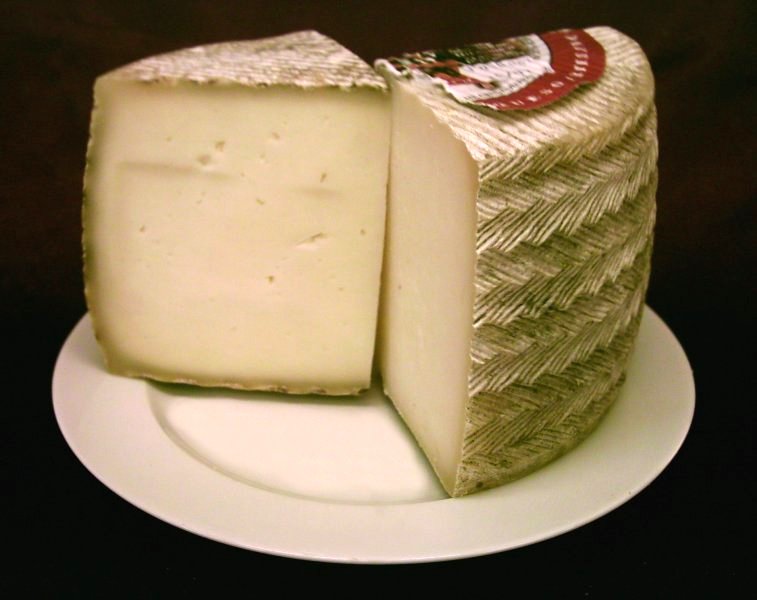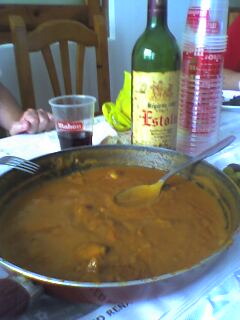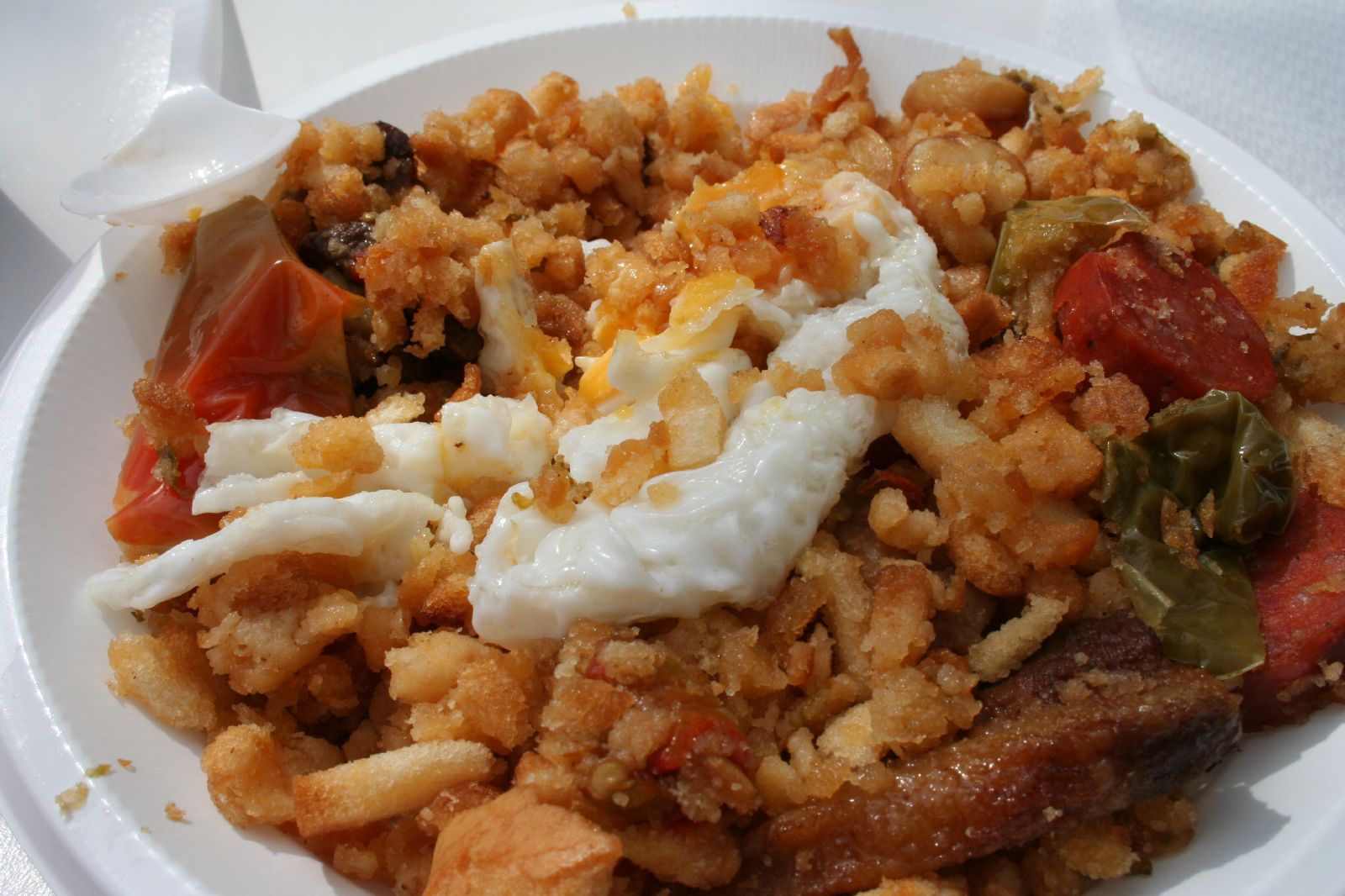Manchegan cuisine on:
[Wikipedia]
[Google]
[Amazon]





 Manchego cuisine (Manchegan cuisine or Castilian-Manchego cuisine) refers to the typical dishes and ingredients in the cuisine of the
Manchego cuisine (Manchegan cuisine or Castilian-Manchego cuisine) refers to the typical dishes and ingredients in the cuisine of the
Consejo regulador del Queso Manchego
{{cuisines Spanish cuisine





Castilla–La Mancha
Castilla–La Mancha (, , ), or Castile La Mancha, is an autonomous community of Spain. Comprising the provinces of Albacete, Ciudad Real, Cuenca, Guadalajara and Toledo, it was created in 1982. The government headquarters are in Toledo, and ...
region of Spain
, image_flag = Bandera de España.svg
, image_coat = Escudo de España (mazonado).svg
, national_motto = ''Plus ultra'' (Latin)(English: "Further Beyond")
, national_anthem = (English: "Royal March")
, i ...
. These include ''pisto
Pisto (also known as pisto manchego) is a Spanish dish originally from the Region of Murcia, Castilla La Mancha and Extremadura. It is made of tomatoes, onions, eggplant or courgettes, green and red peppers, and olive oil. It is usually served ...
'' (a vegetable stew with tomato sauce), '' gazpacho manchego'', ''Manchego
Manchego (officially es, queso manchego, ) is a cheese made in the La Mancha region of Spain from the milk of sheep of the Manchega breed. It is aged between 60 days and 2 years.
Manchego has a firm and compact consistency and a buttery tex ...
'' (a type of cheese), the white wine of La Mancha
La Mancha () is a natural and historical region located in the Spanish provinces of Albacete, Cuenca, Ciudad Real, and Toledo. La Mancha is an arid but fertile plateau (610 m or 2000 ft) that stretches from the mountains of Toledo to th ...
, and the red wine from Valdepeñas (DO).
The dishes and specialties of the region are generally sober and sensible, reflecting a modest, rural origin. They contain a limited number of ingredients that tend to be those most easily accessible by the locals. Dishes tend to be high in calories, ideal for the diets of laborers, farmers, and shepherds. The cuisine of this area was popularized by Miguel de Cervantes
Miguel de Cervantes Saavedra (; 29 September 1547 (assumed) – 22 April 1616 NS) was an Early Modern Spanish writer widely regarded as the greatest writer in the Spanish language and one of the world's pre-eminent novelists. He is best kno ...
in his early 17th century novel ''Don Quixote
is a Spanish epic novel by Miguel de Cervantes. Originally published in two parts, in 1605 and 1615, its full title is ''The Ingenious Gentleman Don Quixote of La Mancha'' or, in Spanish, (changing in Part 2 to ). A founding work of West ...
'', where a number of traditional dishes are mentioned.
Staples
In La Mancha, traditional dishes include ''gachas
Gachas is an ancestral basic dish from central and southern Spain. Its main ingredients are flour, water, olive oil, garlic, paprika and salt.
Origin
Gachas are based on a very ancient Iberian flour-based staple food preparation.
Gachas may hav ...
de almorta'', a paste made with grass pea Grass pea is a common name for several plants, and may refer to:
*''Lathyrus nissolia''
*''Lathyrus sativus
''Lathyrus sativus'', also known as grass pea, cicerchia, blue sweet pea, chickling pea, chickling vetch, Indian pea, white pea and white ...
''(Lathirus sativus)'' flour, and ''tortas de gazpacho
Torta de gazpacho is a type of torta, or flat bread, used to prepare a dish called ''gazpacho'' or ''gazpacho manchego'' in La Mancha and Southeast Spain, including Murcia and parts of the autonomous community of Valencia.
A ''torta de g ...
'', a flat bread that is the base for the "gazpachos", an elaborate dish appearing in El Quixote under the name of "galianos".
Fruits and vegetables
Local ingredients
One of the local vegetables is the bladder campion ('' Silene vulgaris'') plant, known colloquially as ''collejas.'' These plants are traditionally gathered in the mountains of La Mancha (as well as others parts of Europe, Africa, and Asia) and used for a variety of dishes. Like most Spanish cuisine, many local dishes contain garlic, including ' (salt cod with spring onions) and ' (salt cod with mashed potatoes, also called '). Additionally, the ''ñora'', a cultivated version of the ''Capsicum annuum
''Capsicum annuum'' is a species of the plant genus ''Capsicum'' native to southern North America, the Caribbean, and northern South America. This species is the most common and extensively cultivated of the five domesticated capsicums. The spec ...
'' pepper from Valencia, is often used in local dishes such as ''manitas de cerdo'' (pig's feet
A pig's trotter, also known as a pettitoe, or sometimes known as a pig's foot, is the culinary term for the foot of a pig. The cuts are used in various dishes around the world, and experienced a resurgence in the late 2000s.
Description
Pigs' ...
) and ''migas
Migas () ("crumbs" in English) is a dish traditionally made from stale bread and other ingredients in Spanish and Portuguese cuisines. Originally introduced by shepherds, migas are very popular across the Iberian Peninsula, and are the typical br ...
''.
Standalone products include '','' a variety of small aubergines that are grown in Almagro, Ciudad Real
Almagro () is a town and municipality situated in Ciudad Real province, in the autonomous community of Castile-La Mancha, Spain. A tourist destination, Almagro is designated a ''Conjunto histórico'', a type of conservation area.
Almagro lies ...
. These are seasoned and pickled
Pickling is the process of preserving or extending the shelf life of food by either anaerobic fermentation in brine or immersion in vinegar. The pickling procedure typically affects the food's texture and flavor. The resulting food is called ...
according to a traditional recipe and usually eaten as a snack or side dish.
Vegetarian dishes
There are not many purely vegetarian dishes in the region. Some traditional vegetable-based dishes are ''pisto manchego'' (a local equivalent ofratatouille
Ratatouille ( , ), oc, ratatolha , is a French Provençal dish of stewed vegetables which originated in Nice, and is sometimes referred to as ''ratatouille niçoise'' (). Recipes and cooking times differ widely, but common ingredients include ...
), ' (a salad of onion, tomato, and cucumber), ' (roasted red peppers), and '' gazpacho viudo'' (widower gazpacho, or gazpacho made with bladder campion leaves).
Meat and fish
There are many local meat dishes, which consist primarily of sheep,goat
The goat or domestic goat (''Capra hircus'') is a domesticated species of goat-antelope typically kept as livestock. It was domesticated from the wild goat (''C. aegagrus'') of Southwest Asia and Eastern Europe. The goat is a member of the a ...
, and, to a lesser degree, beef
Beef is the culinary name for meat from cattle (''Bos taurus'').
In prehistoric times, humankind hunted aurochs and later domesticated them. Since that time, numerous breeds of cattle have been bred specifically for the quality or quantit ...
. The most important dishes are '' carcamusas'' (typical of Toledo), '' chanfarina'', roast lamb, '' cuchifritos'', ''migas
Migas () ("crumbs" in English) is a dish traditionally made from stale bread and other ingredients in Spanish and Portuguese cuisines. Originally introduced by shepherds, migas are very popular across the Iberian Peninsula, and are the typical br ...
'', '' gallina en pepitoria'' (chicken a la ), ''salpicón
Salpicon (or salpicón, meaning "hodgepodge" or "medley" in Spanish) is a dish of one or more ingredients diced or minced and bound with a sauce or liquid. There are different versions found in Spanish and the broader Latin American cuisine. A sal ...
'', '' paturrillo'', and '. In areas where there is a lot of hunting, a number of game based dishes are also popular, such as '' conejo al ajillo'' (rabbit with garlic), ''liebre a la cazadora'' (hare hunter-style), and '.
La Mancha is a landlocked area with historically few bodies of freshwater to allow for the generalization of fish in its cuisine. The traditional fish is therefore '' bacalao'' (salt cod), which was historically imported from coastal areas and does not spoil. This can be found in some dishes, notably chickpeas with cod, eaten during Lent.
Cheeses
''Queso manchego'', or "cheese from La Mancha", is one of the most famous Spanish cheeses; more than 30% of Spain's cheese products are of this variety. It is a cured cheese made from the milk of local manchega sheep ''(Ovis aries ligeriensis)'', also called ''ovejas manchegas'') which abound in the pastures year-round. The mass of the cheese is fairly hard and dense, with an ivory-white color. It has a characteristically tart taste when it is new due to the natural flavor of the sheep's milk, though as the cheese ages it slowly develops a savory quality, which Carlos Yescas of the Oldways Cheese Coalition describes as "a delicate balance of buttery, tart, sweet, and nutty." The cheese is also high in calcium, Vitamins A, D, and E, and natural protein. There are several varieties of ''queso manchego'', differentiated by both curing time and individual tradition (some are submerged in olive oil while curing).Wines
Wine production is very important to the region, which has many protected designations of origin for the area. The major PDO is D.O. La Mancha, but others include: D.O. Valdepeñas in Ciudad Real; D.O. Méntrida in Toledo; D.O. Jumilla and D.O. Manchuela inAlbacete
Albacete (, also , ; ar, ﭐَلبَسِيط, Al-Basīṭ) is a city and municipality in the Spanish autonomous community of Castilla–La Mancha, and capital of the province of Albacete.
Lying in the south-east of the Iberian Peninsula, the ...
; D.O. Mondéjar in Guadalajara, etc. In addition there are numerous home-made wines, such as the sacramental wine
Sacramental wine, Communion wine, altar wine, or wine for consecration is wine obtained from grapes and intended for use in celebration of the Eucharist (also referred to as the Lord's Supper or Holy Communion, among other names). It is usually ...
s known as "pitarras."
Entrées
Desserts
References
External links
*"La cocina del Quijote", * "Costumbres y cocina manchega",Consejo regulador del Queso Manchego
{{cuisines Spanish cuisine